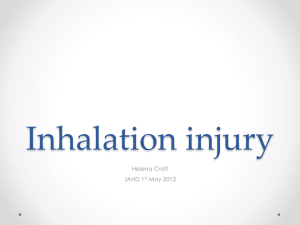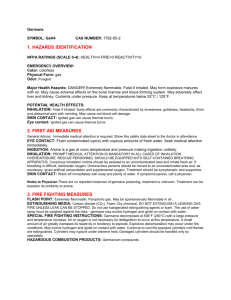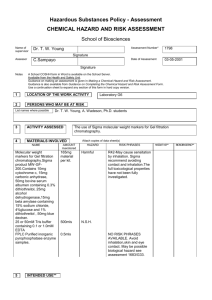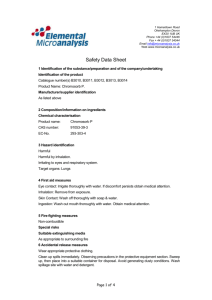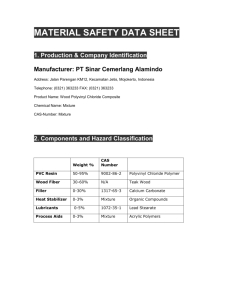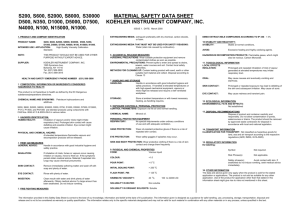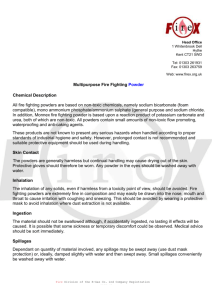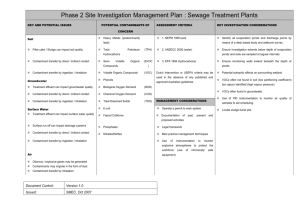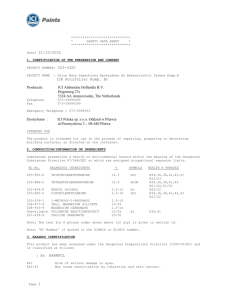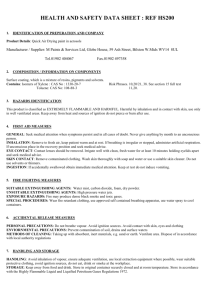Summary of the Potential Impacts of EPA`s Risk Assessment
advertisement
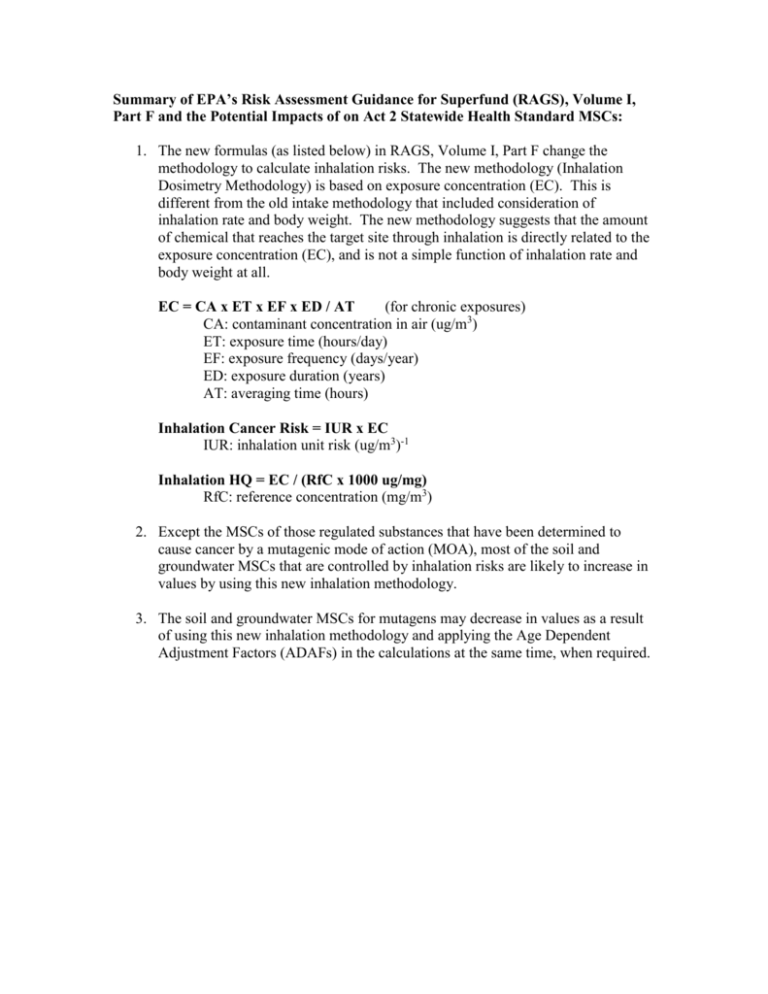
Summary of EPA’s Risk Assessment Guidance for Superfund (RAGS), Volume I, Part F and the Potential Impacts of on Act 2 Statewide Health Standard MSCs: 1. The new formulas (as listed below) in RAGS, Volume I, Part F change the methodology to calculate inhalation risks. The new methodology (Inhalation Dosimetry Methodology) is based on exposure concentration (EC). This is different from the old intake methodology that included consideration of inhalation rate and body weight. The new methodology suggests that the amount of chemical that reaches the target site through inhalation is directly related to the exposure concentration (EC), and is not a simple function of inhalation rate and body weight at all. EC = CA x ET x EF x ED / AT (for chronic exposures) CA: contaminant concentration in air (ug/m3) ET: exposure time (hours/day) EF: exposure frequency (days/year) ED: exposure duration (years) AT: averaging time (hours) Inhalation Cancer Risk = IUR x EC IUR: inhalation unit risk (ug/m3)-1 Inhalation HQ = EC / (RfC x 1000 ug/mg) RfC: reference concentration (mg/m3) 2. Except the MSCs of those regulated substances that have been determined to cause cancer by a mutagenic mode of action (MOA), most of the soil and groundwater MSCs that are controlled by inhalation risks are likely to increase in values by using this new inhalation methodology. 3. The soil and groundwater MSCs for mutagens may decrease in values as a result of using this new inhalation methodology and applying the Age Dependent Adjustment Factors (ADAFs) in the calculations at the same time, when required.
